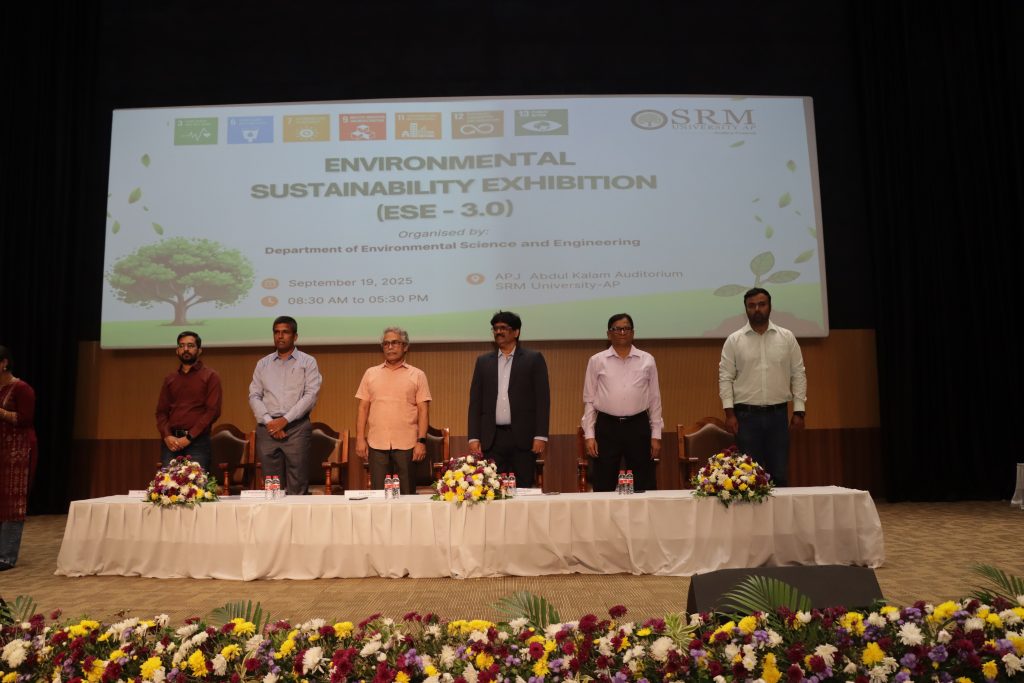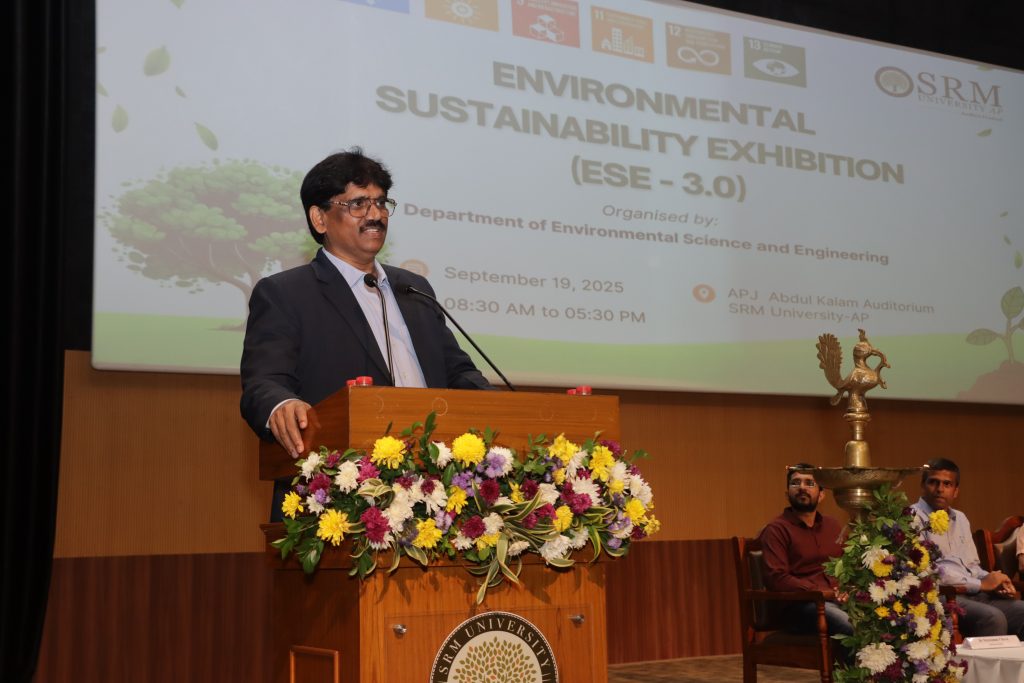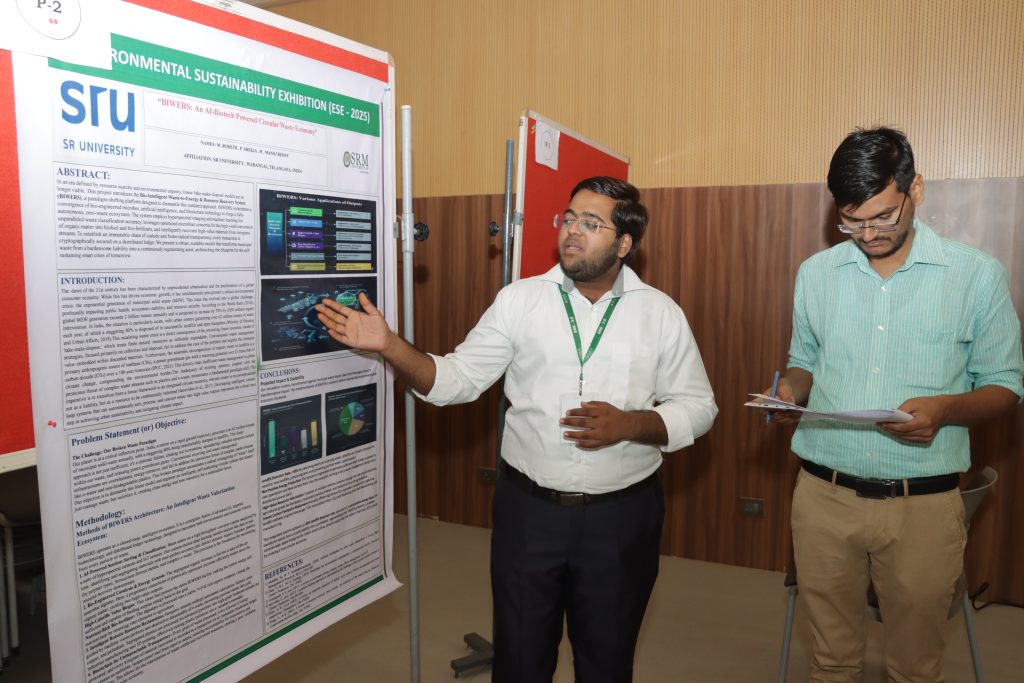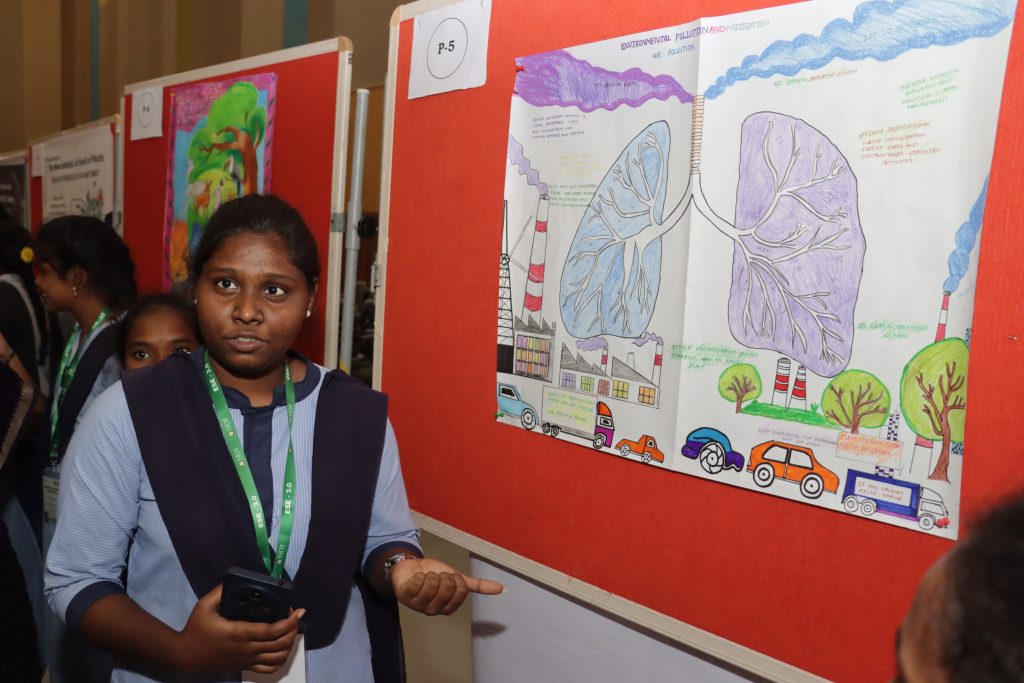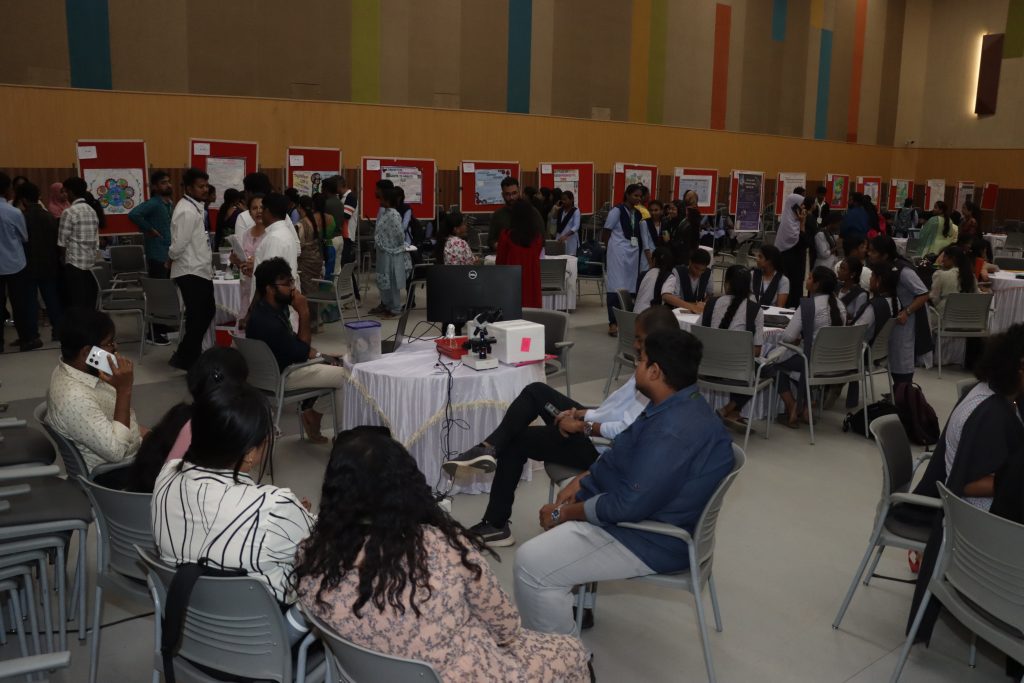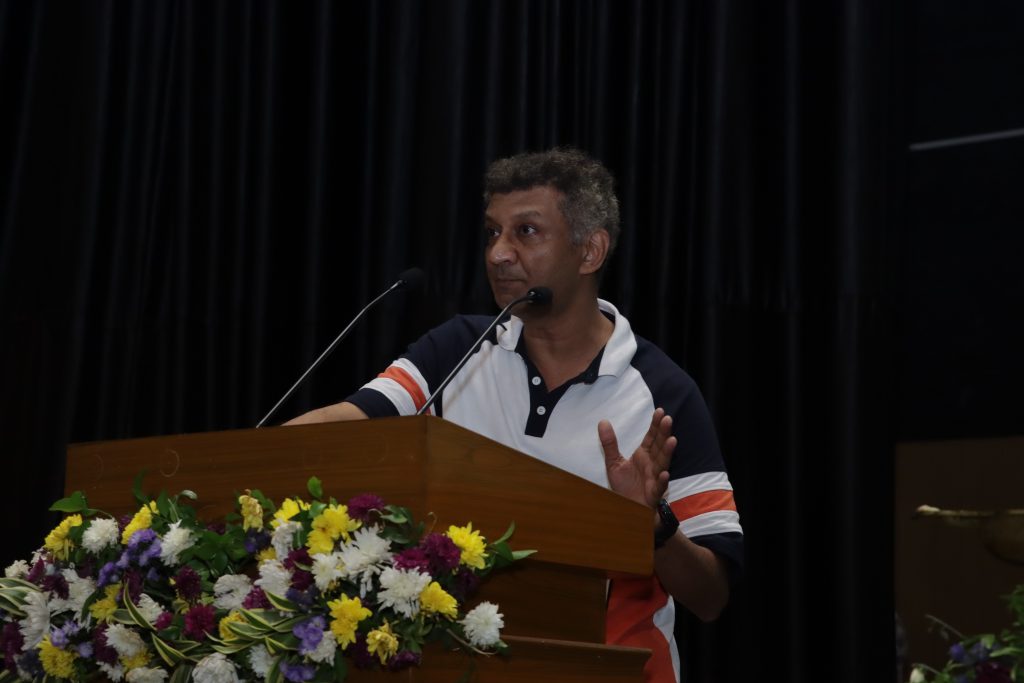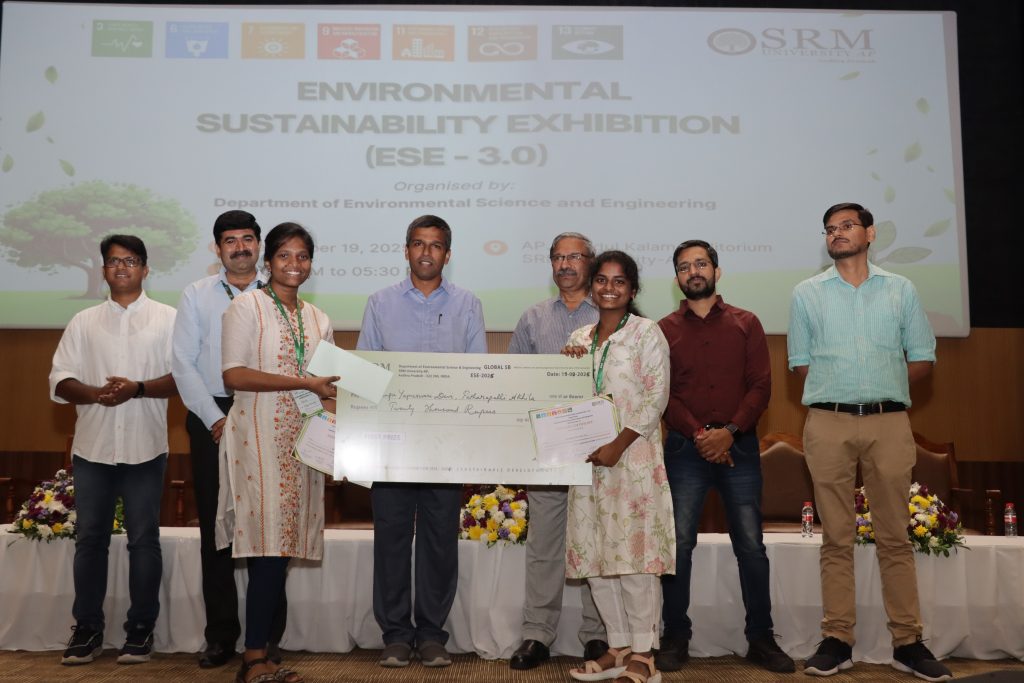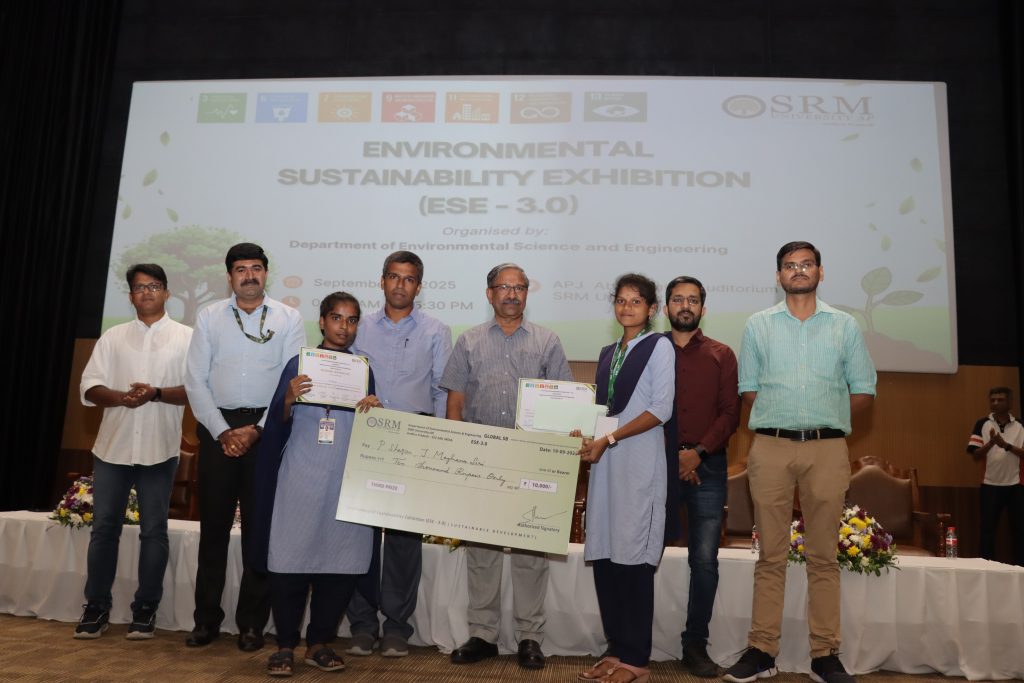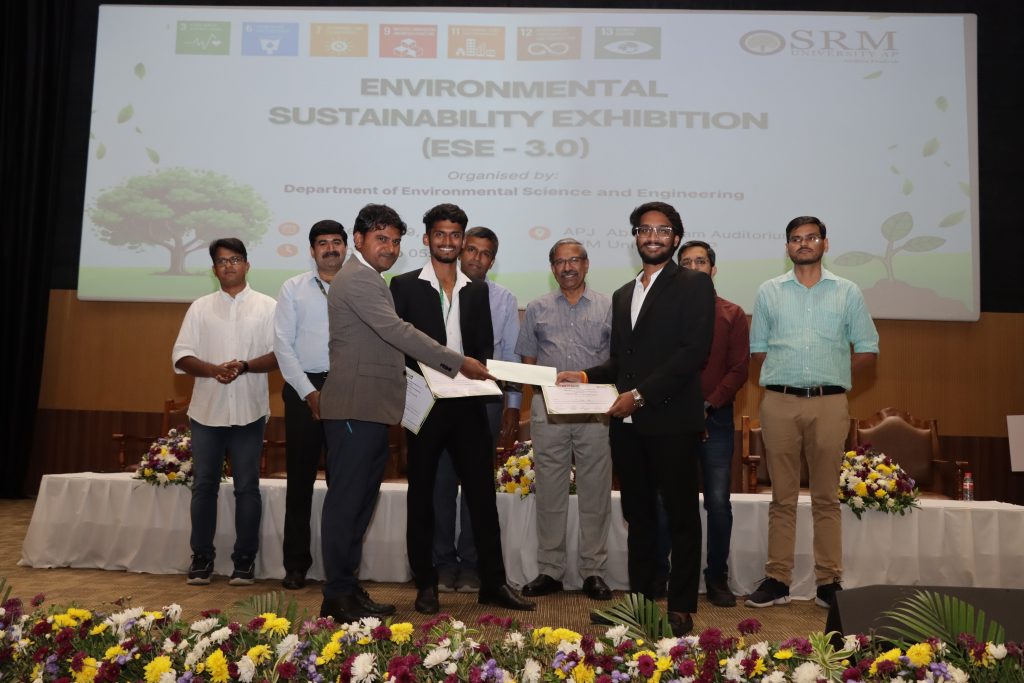Seven Professors Ranked Among World’s Top 2% Scientists by Stanford University
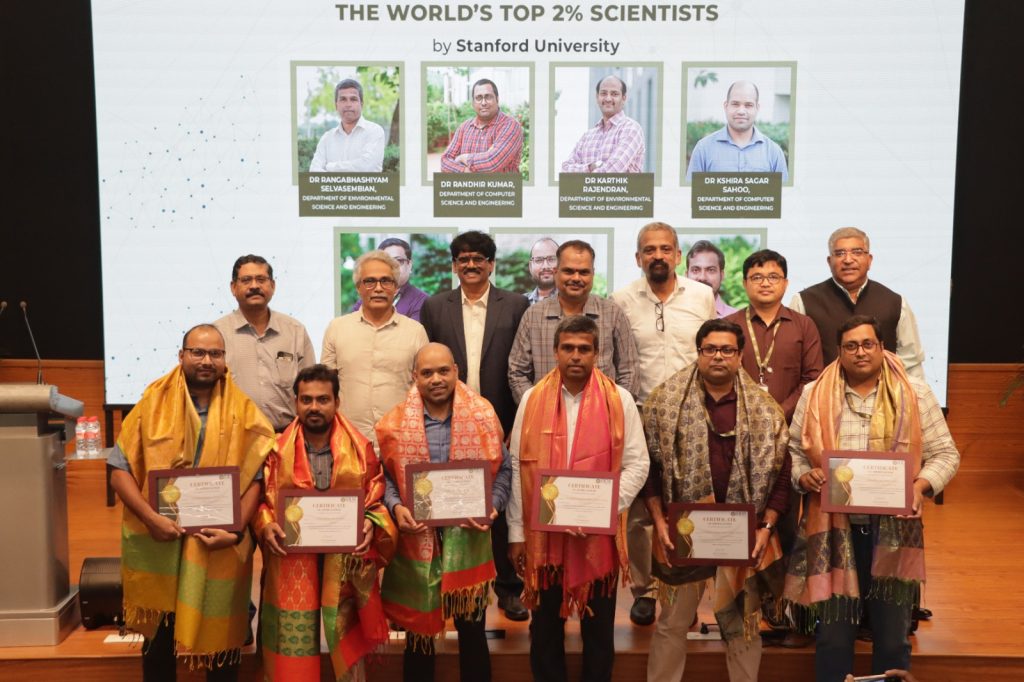
Seven of SRM AP’s distinguished faculty members have been recognised among the World’s Top 2% Scientists for the year 2025, a list published by Elsevier and compiled by Stanford University. This global recognition stands as a testament to the university’s expanding research footprint and the academic excellence of its scholars.
The honourees include Dr Rangabhashiyam Selvasembian, Associate Professor and Head, Department of Environmental Science and Engineering, in the domain of Earth and Environmental Sciences; Dr Karthik Rajendran, Associate Professor, Department of Environmental Science and Engineering, in the domain of Enabling and Strategic Technologies; Dr Randhir Kumar, Assistant Professor, Department of Computer Science and Engineering, in the domain of Information and Communication Technologies; and Dr Kshira Sagar Sahoo, Assistant Professor, Department of Computer Science and Engineering, in the domain of Information and Communication Technologies. In recognition of their achievement, these four scientists will also receive a cash award of ₹50,000/- each.
The other honourees are Dr Vinodkumar Etacheri, Associate Professor of Practice, Center for Interdisciplinary Research, in the domain of Enabling and Strategic Technologies; Dr Prabhujit Mohapatra, Assistant Professor, Department of Computer Science and Engineering, in the domain of Information and Communication Technologies; and Dr Pintu Bhunia, Assistant Professor, Department of Mathematics, in the domain of Functional Analysis and Operator Theory, making a total of seven SRM AP faculty members in the global list. This recognition underscores the university’s multidisciplinary research excellence and its commitment to advancing science, technology, and innovation to address global challenges.
Congratulating the scientists during the felicitation ceremony, Prof. Ch Satish Kumar, Vice Chancellor(I/C), said, “I am honoured to felicitate our faculty ranked among the world’s top 2% scientists by Stanford University. They are role models for colleagues and society alike. This recognition is a proud moment for SRM University-AP and a validation of the world-class research culture we nurture. The global impact of our faculty not only advances scientific knowledge but also inspires our students to innovate fearlessly and contribute meaningfully to society.”
The event concluded with a vote of thanks delivered by Mr Issac Samala Gerard, Director-HR, who lauded the faculty for their achievements and encouraged them to continue raising the bar, thereby strengthening SRM University-AP’s presence on the global research map.
- Published in News, Research News
Sustainable Development in the BRICS Economies
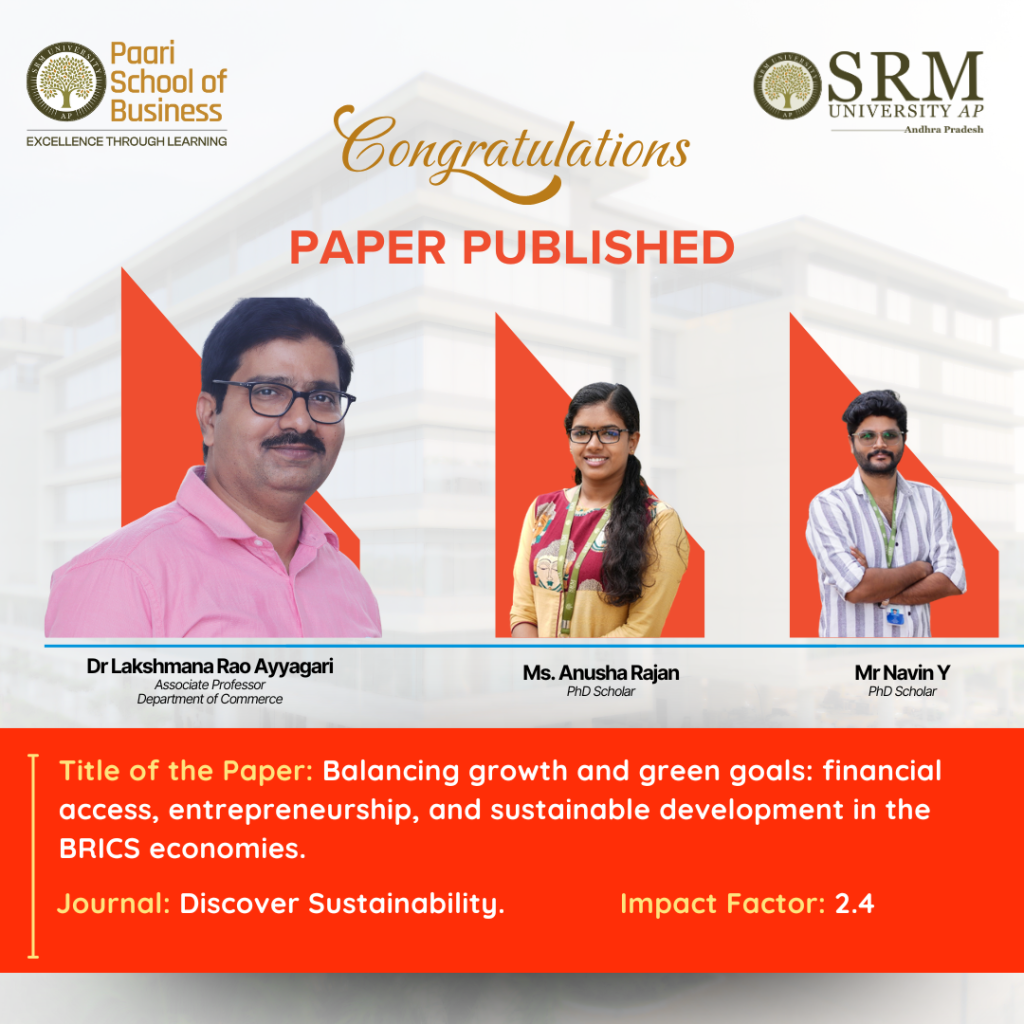 Imagine a world where economic growth of a society is done sustainably and with environmental care. Dr Lakshmana Rao Ayyagari, Assistant Professor, Department of Commerce, along with his scholars Mr Navin Y and Ms Anusha Rajan, has published an article “Balancing Growth and Green Goals: Financial Access, Entrepreneurship, and Sustainable Development in the BRICS Economies” in the Q1 journal Discover Sustainability, that looks at how countries like Brazil, Russia, India, China, and South Africa (BRICS) can support entrepreneurs without hurting the planet. The goal is to help governments, banks, and businesses grow responsibly by making sure financial tools support both money-making and environmental care.
Imagine a world where economic growth of a society is done sustainably and with environmental care. Dr Lakshmana Rao Ayyagari, Assistant Professor, Department of Commerce, along with his scholars Mr Navin Y and Ms Anusha Rajan, has published an article “Balancing Growth and Green Goals: Financial Access, Entrepreneurship, and Sustainable Development in the BRICS Economies” in the Q1 journal Discover Sustainability, that looks at how countries like Brazil, Russia, India, China, and South Africa (BRICS) can support entrepreneurs without hurting the planet. The goal is to help governments, banks, and businesses grow responsibly by making sure financial tools support both money-making and environmental care.
Abstract
Financial access is a cornerstone of entrepreneurship and a key enabler of economic development. This study examines the dual role of financial systems in promoting entrepreneurial growth and sustainable development across BRICS nations (2000–2023). Using robust PLS-SEM analysis, the research reveals that while financial access drives business formation and economic resilience, it also poses ecological challenges through resource overuse and pollution. The findings highlight a paradox: the same financial mechanisms that foster progress can strain environmental sustainability. The study proposes actionable strategies to align finance with green development goals.
Practical Implementation / Social Implications of the Research
- Policy Impact: Informs BRICS governments to introduce green credit quotas, eco-tax incentives, and sustainability assessments in funding policies.
- Financial Sector Reform: Encourages banks to incorporate environmental risks into lending practices.
- Community Empowerment: Highlights the importance of inclusive entrepreneurship programs, especially for rural and marginalized communities.
- Sustainability Education: Provides a foundation for integrating sustainability into entrepreneurship curricula and public discourse.
Future Research Plans
- Explore the role of blockchain and AI in promoting transparent, sustainable financial systems.
- Investigate gender and social equity in sustainable entrepreneurship ecosystems.
- Conduct comparative studies on green finance policy innovations beyond BRICS (e.g., ASEAN or African Union).
- Develop longitudinal, mixed-methods frameworks to assess cultural, institutional, and digital factors in sustainability transitions.
Link to the Article
- Published in Commerce Current Happenings, Departmental News, News, Research News
Transforming IoT Performance: Deep Learning in the Fog–Cloud Continuum
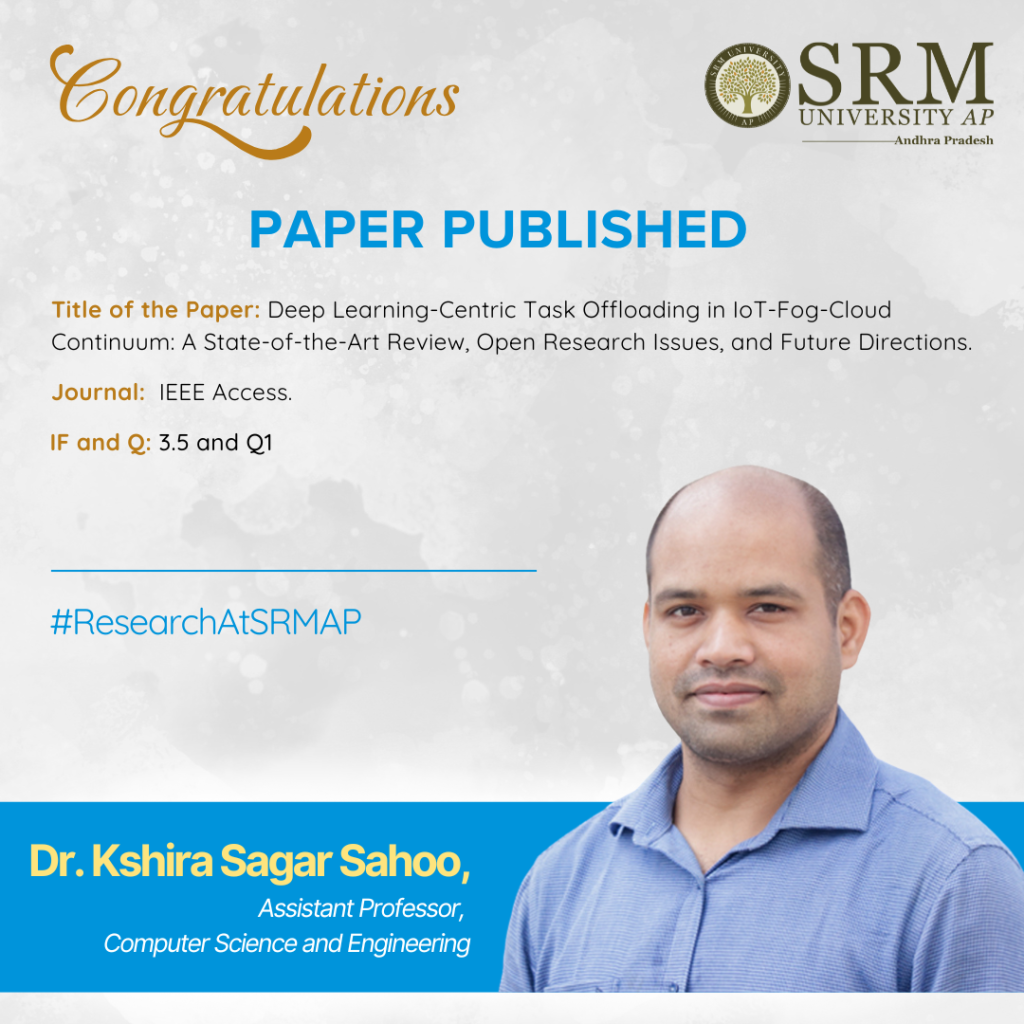
In the paper titled “Deep Learning-centric Task Offloading in IoT-Fog-Cloud Continuum: A State-of-the-Art Review, Open Research Issues and Future Directions,” by Dr Kshira Sagar Sahoo, Assistant Professor, Department of Computer Science and Engineering, and collaborators, the role of machine learning and deep learning in optimising IoT systems is comprehensively reviewed. Published in IEEE Access (2025), the study examines how intelligent task offloading and resource allocation across the fog–cloud continuum can address challenges of latency, bandwidth, and privacy. The article highlights key open issues and future directions, offering insights for developing faster, more reliable, and secure IoT applications in domains such as healthcare, smart cities, autonomous vehicles, and industrial IoT.
Abstract
The rapid growth of IoT and real-time applications has created massive volumes of data, which are traditionally processed in cloud-centric systems. This approach often suffers from high latency, bandwidth limitations, and privacy risks. Fog computing, by bringing computation closer to IoT devices, offers a promising solution. Our study provides a comprehensive review of task offloading and resource allocation in fog–cloud continuum, with a focus on machine learning and deep learning–based approaches.
Explanation in Layperson’s Terms
With billions of smart devices (like wearables, sensors, and cameras) generating data every second, sending everything to the cloud for processing can cause delays and strain the internet. Imagine if your smartwatch had to send your heartbeat data across the globe before alerting you of a health issue—that delay could be dangerous. Our research looks at how to use fog–cloud continuum, where nearby devices like routers or gateways help with computation instead of sending everything to the cloud.
Practical Implementation
Findings from this survey can help design smarter IoT systems where tasks are offloaded efficiently to nearby fog or edge devices, reducing latency and improving reliability. Key applications include:
- Healthcare monitoring (real-time alerts)
- Smart cities (traffic management, surveillance)
- Autonomous vehicles (low-latency decision-making)
- Industrial IoT (automation, predictive maintenance)
Social Impact
- Faster decision-making: Improves user safety and experience by cutting delays.
- Cost efficiency: Reduces operational costs by lowering dependence on cloud-only processing.
- Data privacy: Sensitive data can be processed closer to the source, enhancing security.
Collaborations
This research is a joint collaboration between:
- University of Saskatchewan, Saskatoon, SK, Canada
- GITAM Deemed to be University, Visakhapatnam, India
- SRM University-AP
Future Research Plans
- Developing lightweight, explainable AI models for task offloading on constrained IoT devices.
- Extending research into cybersecurity in IoT–Fog–Cloud systems, particularly DDoS detection and mitigation.
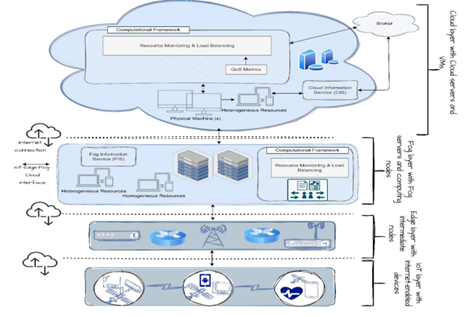
- Published in CSE NEWS, Departmental News, News, Research News
Innovating for a Greener Future: Environmental Sustainability Exhibition 3.0 at SRM AP
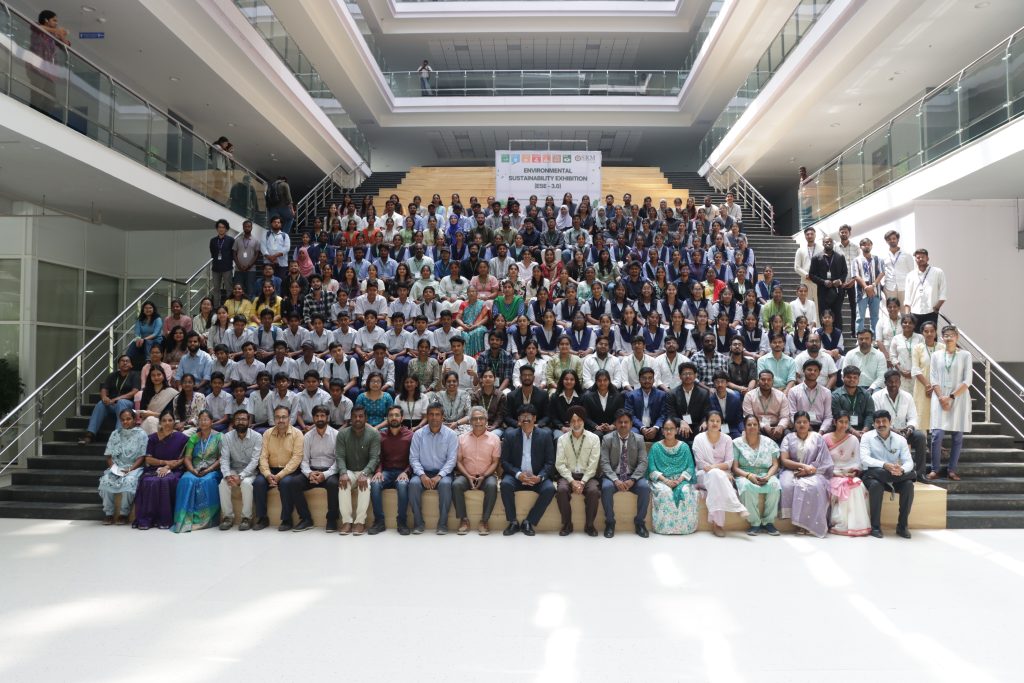
The Department of Environmental Science and Engineering, successfully hosted the third edition of the Environmental Sustainability Exhibition (ESE 3.0), a national-level platform dedicated to advancing knowledge, innovation, and collaboration in environmental protection and sustainable technologies, on September 19, 2025.
The event was inaugurated by Prof. Ch Satish Kumar, Vice Chancellor (I/C), who declared the exhibition open in the esteemed presence of Prof. C V Tomy, Dean of the School of Engineering and Sciences, Dr Rangabhashiyam Selvasembian, Associate Professor and Head of the Department of Environmental Science and Engineering, along with the, Heads of Departments, faculty members, staff, and students from various Universities and schools around the region.
In his inaugural address, Prof. Satish Kumar, Vice-Chancellor (I/C) , connected the exhibition’s vision to global efforts, stressing, “Sustainability is not an abstract idea but a responsibility towards future generations. Platforms like ESE 3.0 enable students to dream, innovate, and contribute to India’s commitment towards the United Nations’ Sustainable Development Goals and the Paris Climate Agreement.” He also emphasised the importance of achieving net zero emissions, drawing examples from states like Sikkim and nations like Bhutan.
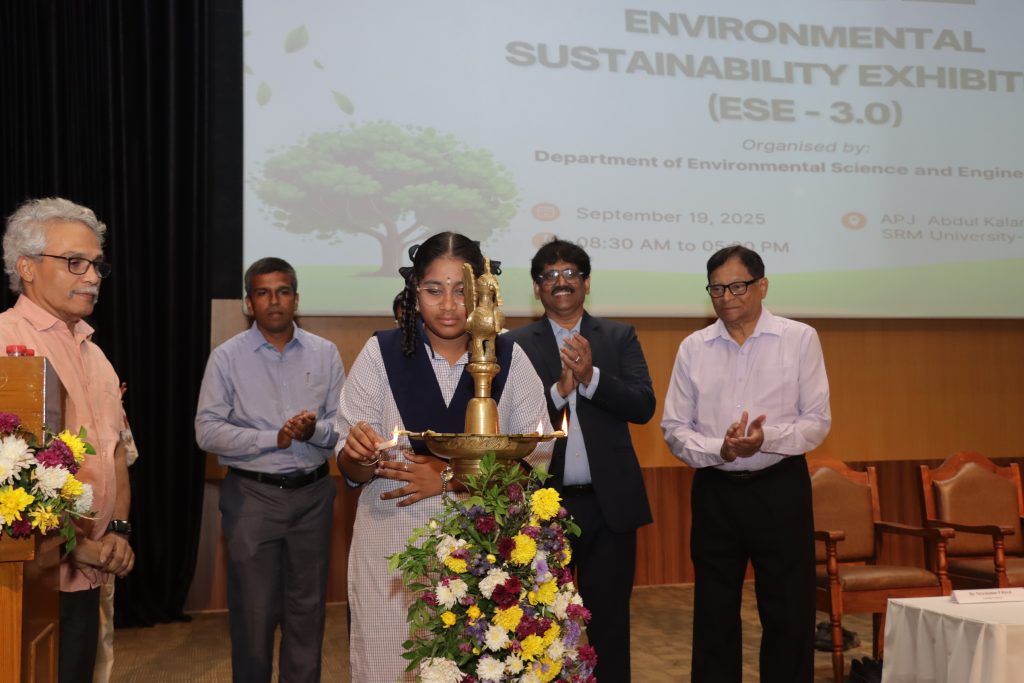
Carrying forward the legacy of the successful ESE 1.0 (2024) and ESE 2.0 (March 2025), this edition brought together 155 participants, hailing from states such as Punjab, Bihar, Telangana, and Andhra Pradesh. Around 60 exhibits, including 23 posters, 10 demos, and 25 oral presentations, represented prestigious colleges and universities nationwide. Each showcased innovative ideas rooted in their local contexts and challenges.
The top three winners were awarded a prize pool of ₹20,000, ₹15,000, and ₹10,000. Team P Akhila & V Yagneswari (Aditya University) secured the first prize, followed by Swarna Baisa & Bhanu Naik Jaloth (SR University, Warangal) and J Meghanasiri & P Sharon (SRR & CVR Govt. Degree College), who were awarded the second and third prizes, respectively.
Addressing the gathering, Dr Rangabhashiyam Selvasembian noted: “ESE 3.0 serves as an exceptional platform for students across India to present innovative ideas and initiatives for building a sustainable future. It motivates them to showcase their projects, interact with experts, and contribute meaningfully to the ongoing discourse on sustainability.”
Prof. C V Tomy further emphasised the importance of personal responsibility in everyday choices: “Every technological advancement, while beneficial, has an environmental cost. Even small, mindful actions such as conserving water and electricity make a significant difference when adopted collectively. Cultivating these habits early is the foundation of sustainability.”
The exhibition highlighted themes of air and water pollution mitigation, resource optimisation, sustainable development practices, waste management, renewable energy, and circular economy models. Participants presented working models, prototypes, posters, and research-based solutions, fostering rich academic exchange and dialogue.
Beyond the exhibition stalls, the event also included Poster presentations on climate change, environmental health, and resource equity, Hands-on training sessions introducing sustainability-driven advancements, Laboratory and campus visits offering exposure to SRM-AP’s state-of-the-art facilities and cutting-edge environmental research infrastructure.
With enthusiastic participation, thought-provoking exhibits, and meaningful interactions, ESE 3.0 reaffirmed SRM University-AP’s role as a hub for environmental innovation and sustainability research, dedicated to shaping solutions for the most pressing global challenges.
- Published in Departmental News, ENVS News, News, Research News
Dr Aswani on Blockchain-Based Self-Sovereign Identity Management
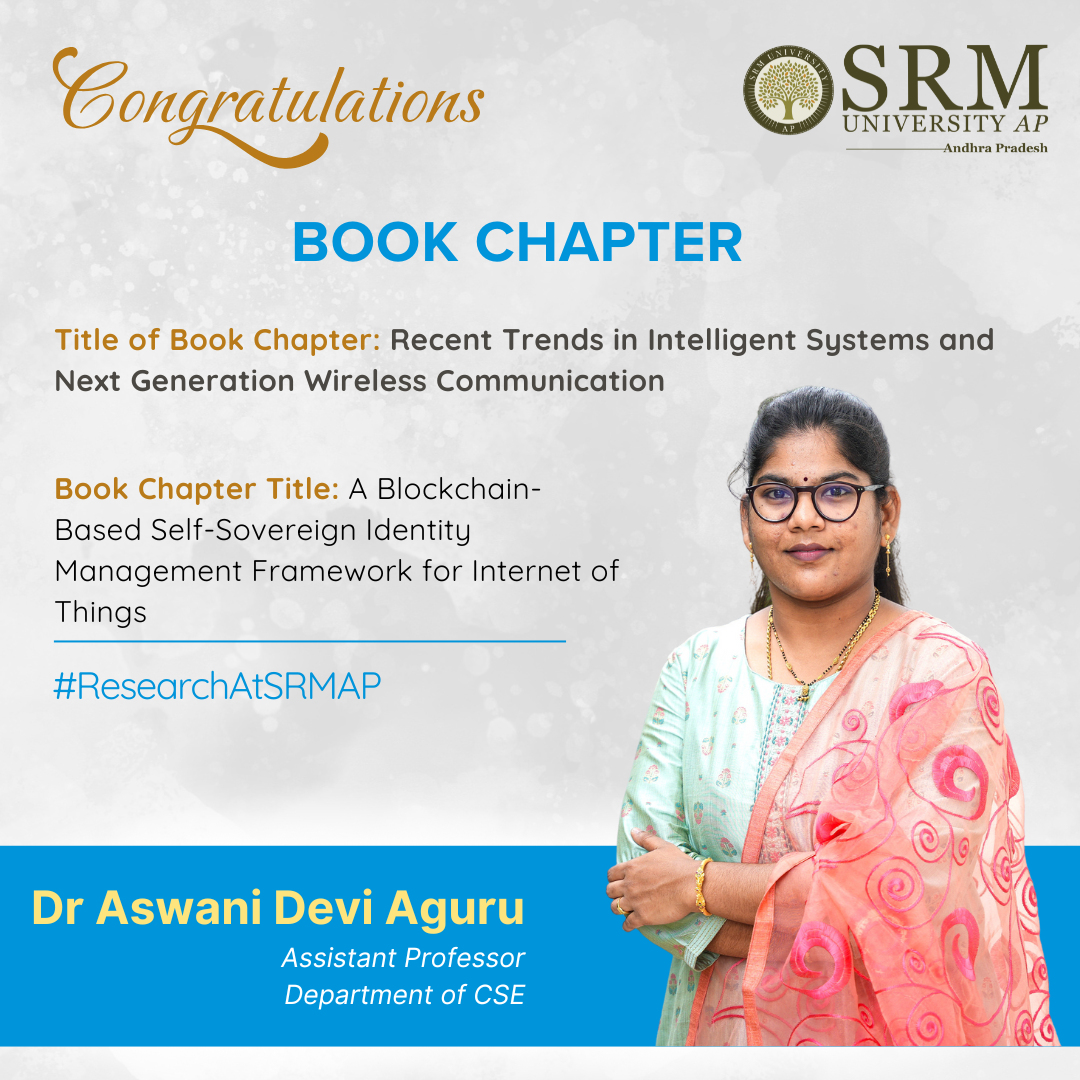 The book chapter “A Novel Blockchain-Based Self-Sovereign Identity Management System for IoT Devices” is a transformative exploration within the book “Decentralized Identity Systems: Innovations and Challenges.” Authored by Dr Aswani Devi Aguru, Assistant Professor, Department of CSEand co-authored by Dr Suresh Babu Erukala NIT Warangal, this chapter delves into the critical intersection of blockchain technology and identity management, specifically tailored for the rapidly evolving Internet of Things (IoT) landscape.
The book chapter “A Novel Blockchain-Based Self-Sovereign Identity Management System for IoT Devices” is a transformative exploration within the book “Decentralized Identity Systems: Innovations and Challenges.” Authored by Dr Aswani Devi Aguru, Assistant Professor, Department of CSEand co-authored by Dr Suresh Babu Erukala NIT Warangal, this chapter delves into the critical intersection of blockchain technology and identity management, specifically tailored for the rapidly evolving Internet of Things (IoT) landscape.
Brief Introduction of the Book Chapter.
This book chapter presents a novel blockchain-based self-sovereign identity (SSI) management system that promotes global interoperability by generating decentralized, secure, and unique identifiers for edge devices worldwide. The proposed system leverages the power of permissioned Blockchain, specifically Hyperledger Indy, a distributed ledger technology (DLT) designed for creating and managing decentralized identities. The EdDSA-based key management and Plenum Byzantine Fault Tolerant (BFT)-based consensus algorithm introduce novelty and effectiveness in the proposed framework compared to state-of-the-art works on identity management. The performance of Hyperledger Indy Blockchain is tested on Hyperledger Caliper in terms of run time of operations and transaction throughput. We proclaim that our work is one of the earliest studies on Blockchain-based SSI management on Hyperledger Indy.
Significance of the Book Chapter
The author expresses strong enthusiasm for designing novel frameworks for IoT device authentication utilising ECC and AEAD primitives, in addition to developing identity management solutions based on SSI. The alignment of the book’s topics with current research highlights their significance in the progression of these critical areas.
Target Audience:
Very limited research has been carried out on SSI for IoT devices. Researchers will find the book chapter helpful in beginning their research on Blockchain-based decentralised identity management of IoT devices.
Co-authors or other Major Contributors
Dr Suresh Babu Erukala is a co-author. He is working as an Associate Professor in the Department of CSE at NIT Warangal.
The Link to the Book Chapter Publication
- Published in CSE NEWS, Departmental News, News, Research News
A Secure Framework for Embedding Secret Messages within Cover Images
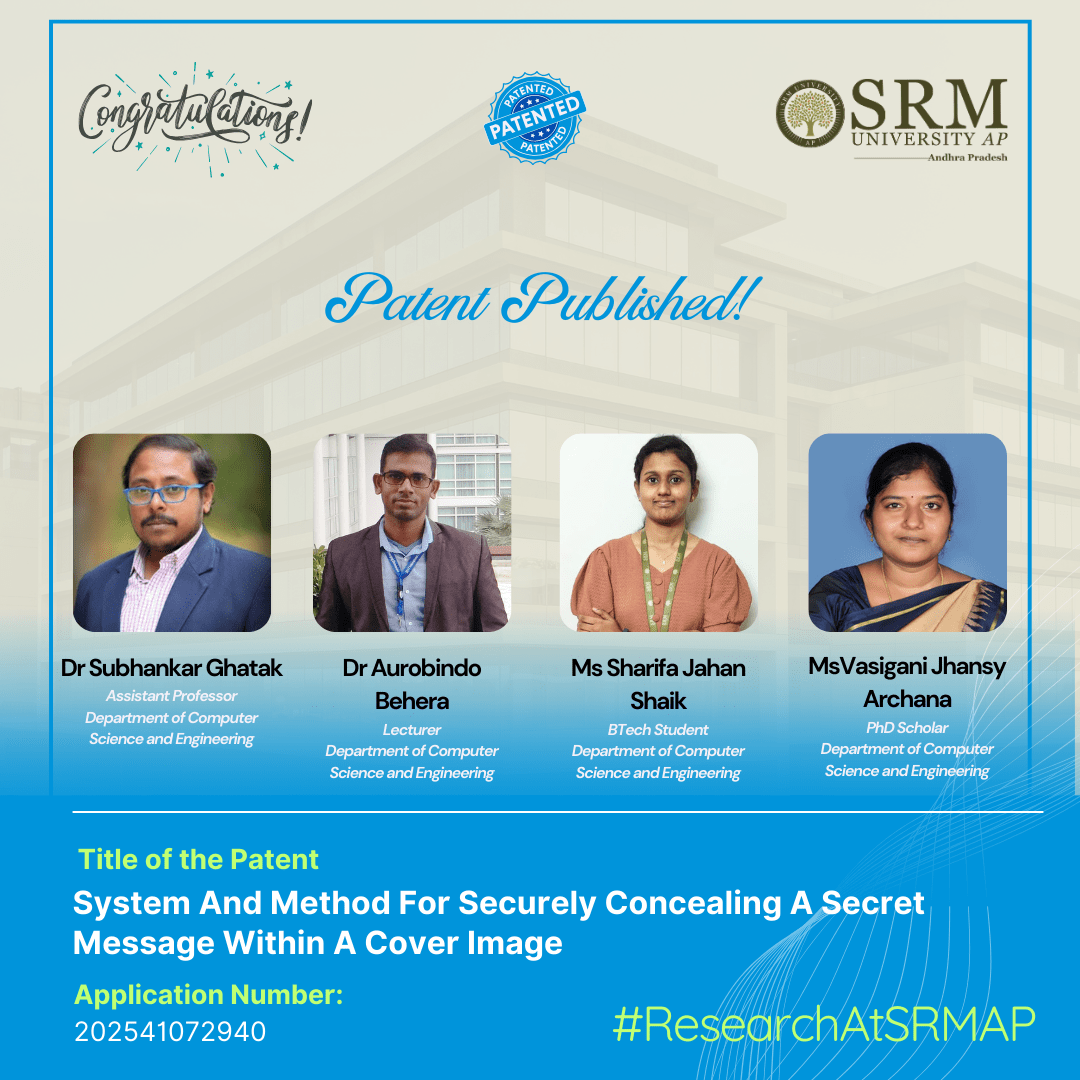 The Department of Computer Science and Engineering has filed and published a patent application titled “System and Method for Securely Concealing a Secret Message within a Cover Image” (Application No. 202541072940) in the Patent Office Journal. The invention is credited to Dr Subhankar Ghatak, Assistant Professor, Department of CSE, Dr Aurobindo Behera, Lecturer, Department of CSE (SRM Education), Ms Sharifa Jahan Shaik, U G Student, Department of CSE, and Ms Vasigani Jhansy Archana, Ph.D. Student, Department of CSE.
The Department of Computer Science and Engineering has filed and published a patent application titled “System and Method for Securely Concealing a Secret Message within a Cover Image” (Application No. 202541072940) in the Patent Office Journal. The invention is credited to Dr Subhankar Ghatak, Assistant Professor, Department of CSE, Dr Aurobindo Behera, Lecturer, Department of CSE (SRM Education), Ms Sharifa Jahan Shaik, U G Student, Department of CSE, and Ms Vasigani Jhansy Archana, Ph.D. Student, Department of CSE.
This innovation introduces a new paradigm in data hiding, advancing beyond conventional steganography techniques. Unlike traditional methods that subtly alter a cover image to embed secret information, this approach leaves the image entirely untouched.
By leveraging Pseudo-Random Number Generation (PRNG) in combination with the cover image and securely storing the PRNG seed value on the Blockchain, the system achieves unparalleled data security and integrity. As a result, the cover image remains completely unmodified, ensuring minimal distortion and highly reliable message retrieval.
Abstract :
This invention presents a novel approach to data hiding that differs from conventional steganography techniques. Unlike traditional methods, which modify the cover image to embed secret data, this methodology ensures the cover image remains completely unaltered. The technique employs Pseudo-Random Number Generation (PRNG) in conjunction with an array and the cover image to conceal secret data. The PRNG seed value is securely stored on the Blockchain, thereby enhancing both uniqueness and security. Since the cover image undergoes no modification, the proposed approach achieves a minimal Mean Squared Error (MSE) for the extracted secret image.
To hide a message in a picture, the usual way is to change the picture slightly—for example, by altering a few pixels so the difference is hard to notice. But if someone examines the image very closely, they might detect something unusual. Our method works differently. It’s like hiding a treasure without ever touching the map. Instead of altering it, we use a secret formula and a random number generator to decide where the hidden information would be if we needed to retrieve it later. The key to that formula is securely stored on the Blockchain, like locking it inside an unbreakable safe. As a result, the picture stays 100% original with no changes, and only the person who has the Blockchain secret key can uncover the hidden message.
Practical implementations :
Military Communication: Steganography can securely encode sensitive data, like that of meeting locations (latitude and longitude), ensuring that critical information remains hidden from adversaries.
Password Protection: Individuals can embed passwords within images, offering an additional layer of security and reducing the risk the unauthorized access.
Covert Communication: Activists or journalists in repressive regimes can use steganography to communicate securely by hiding messages within innocuous-looking images or files.
Medical Image Security: In healthcare, patient data can be securely embedded within medical images, ensuring data confidentiality while sharing the images with specialists.
Future research plans:
AI-Assisted Stealth Optimisation: Use Machine Learning to predict detection patterns and further improve the undetectability of hidden data.
Cross-Platform Media Support: Extend beyond images to videos, audio streams, and 3D models, ensuring zero modification across formats.

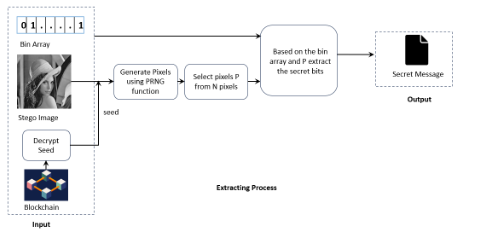
- Published in CSE NEWS, Departmental News, News, Research News
Dr Barman on Hunting for heavy Z ′
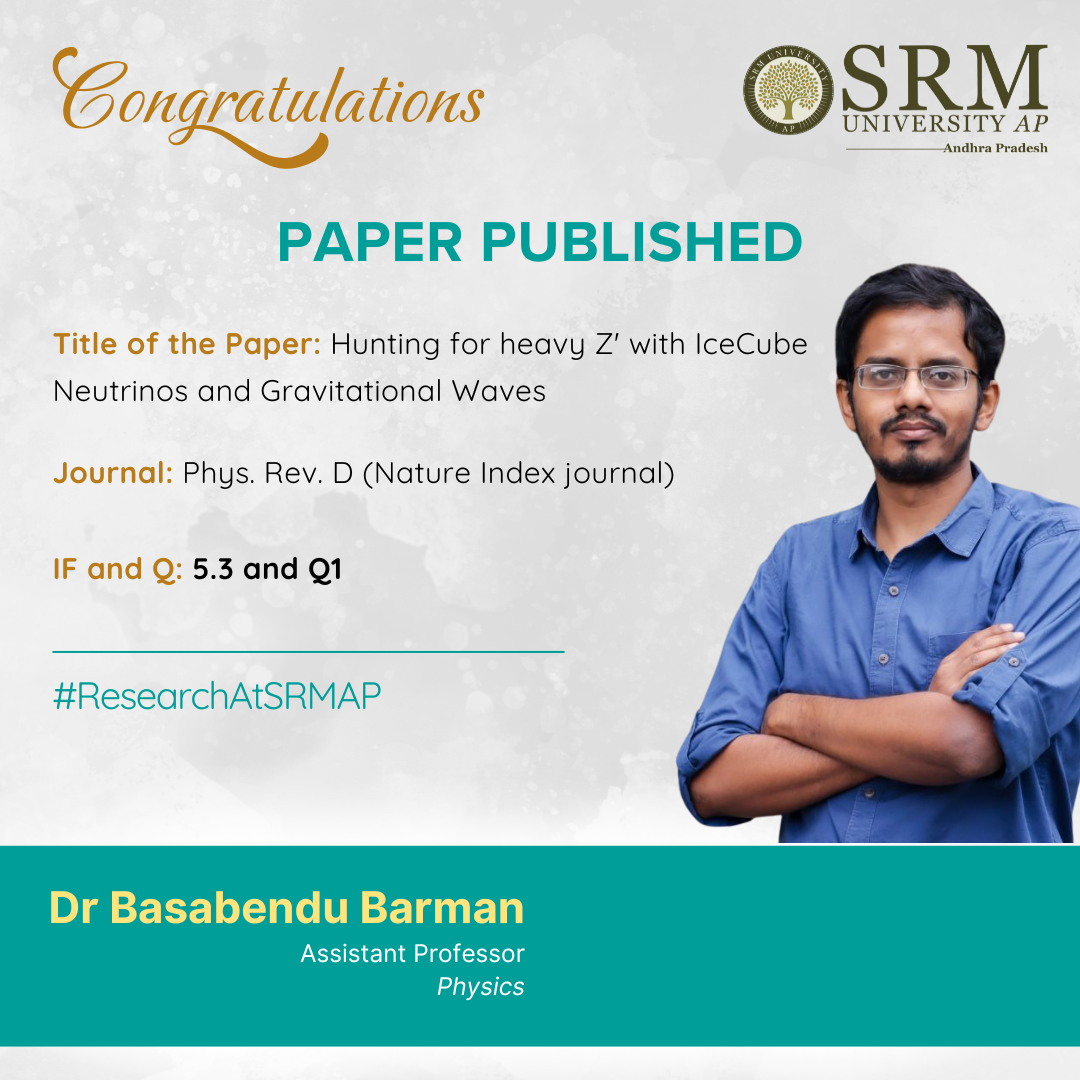 This research article, “Hunting for heavy Z ′ with IceCube neutrinos and gravitational waves,” by Assistant Professor Dr Basabendu Barma, explores the links between dark matter, the imbalance of matter and antimatter in the universe, and how these phenomena might be detected through various methods.
This research article, “Hunting for heavy Z ′ with IceCube neutrinos and gravitational waves,” by Assistant Professor Dr Basabendu Barma, explores the links between dark matter, the imbalance of matter and antimatter in the universe, and how these phenomena might be detected through various methods.
Abstract:
In the minimal gauged B−L extension of the Standard Model, we demonstrate that PeV-scale dark matter (DM) and the baryon asymmetry of the Universe (BAU) can be simultaneously explained through the three right-handed neutrinos (RHNs) present in the theory. The DM candidate undergoes rare decay into light neutrinos, providing an explanation for the observed IceCube events, while the other two RHNs generate the BAU via leptogenesis. The breaking of gauge symmetry gives rise to detectable gravitational waves (GWs) from decaying cosmic strings (CS), making this framework testable at several future GW detectors—despite being beyond the reach of conventional collider experiments due to the extremely weak gauge coupling. The symmetry-breaking scale establishes a connection between particle masses, couplings, and the GW spectrum, offering a unified and predictive scenario.
From the Layman’s Perspective:
We know there are four fundamental forces in nature: strong, weak, electromagnetic, and gravitational. But what if there’s a hidden, fifth force we haven’t discovered yet? The Standard Model of particle physics, which organizes all known particles, doesn’t include this fifth force (and doesn’t include gravity either, unfortunately). So, how can we theoretically create a particle physics model for this possible fifth force? That’s what we explore in this paper.Interestingly, there are already experiments (for example, the Large Hadron Collider or LHC at CERN, Geneva) searching for signs of fifth forces. If this force exists, our model could be tested by these experiments. But there’s more! We also wanted to tackle a big mystery in cosmology: dark matter. Dark matter makes up about 24% of the universe, but we’ve never directly detected it because it doesn’t reflect light—it’s “dark.” However, there are smart ways to try to find it. In this paper, we propose how the same dark matter might interact with the visible universe through this fifth force and thereby leave their footrpints at IceCube experiment that looks for high energy neutrinos or at experiments that search for “spcaetime ripples” called the gravitational waves.
Practical Implementation & Social Impact:
This work primarily contributes to the realm of pure intellectual pursuit. Science speaks the language of data, and data is born from experiments. The validation of any well-constructed theory ultimately depends on experimental evidence. For this reason, it is essential for society to cultivate a culture that values fundamental scientific discussion and increases funding for basic research.
Collaborations:
This work has been done in collaboration with Arindam Das (Hokkaido U.), Suruj Jyoti Das (IBS, Daejeon, CTPU), Marco Merchand (Royal Inst. Tech., Stockholm and Stockholm U., OKC).
Future Plans:
A closer look into early universe dynamics by performing more involved simulations.
Connection between particle physics models and early Universe cosmology. Complementary searches from different experiments in unraveling new physics beyond the Standard Model. Searching new physics at energy and intensity frontier
- Published in Departmental News, News, Physics News, Research News
Dr Lakshmana Rao and Team on Financial Access and Sustainable Development
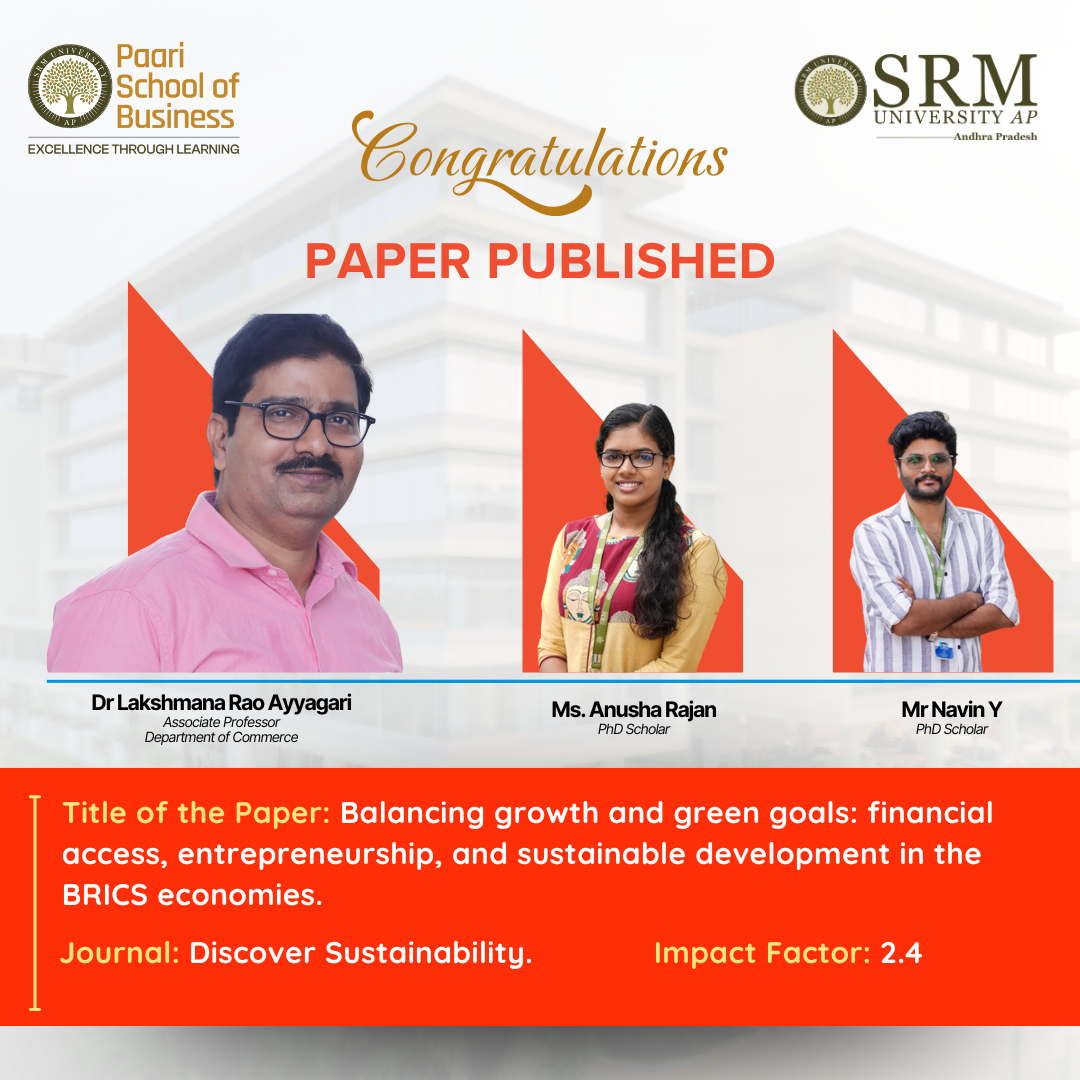 Financial access acts as both a catalyst and a challenge in today’s rapidly evolving economies. The research article “Balancing Growth and Green Goals: Financial Access, Entrepreneurship, and Sustainable Development in the BRICS Economies” by Associate Professor Dr Lakshmana Rao Ayyagari and his research scholars investigates this delicate balance between economic ambition and environmental responsibility. By applying robust PLS-SEM analysis over the period 2000-2023, the study conducted by the team at SRM AP uncovers the paradox of finance: it fuels entrepreneurship and development, while simultaneously straining sustainability goals.
Financial access acts as both a catalyst and a challenge in today’s rapidly evolving economies. The research article “Balancing Growth and Green Goals: Financial Access, Entrepreneurship, and Sustainable Development in the BRICS Economies” by Associate Professor Dr Lakshmana Rao Ayyagari and his research scholars investigates this delicate balance between economic ambition and environmental responsibility. By applying robust PLS-SEM analysis over the period 2000-2023, the study conducted by the team at SRM AP uncovers the paradox of finance: it fuels entrepreneurship and development, while simultaneously straining sustainability goals.
The findings present a timely call for reimagining financial frameworks that not only strengthen economic systems but also safeguard ecological balance. The research offers actionable insights for policymakers, financial institutions, and communities- pointing towards a future where financial access empowers entrepreneurs without compromising green development.
Abstract
Financial access is a cornerstone of entrepreneurship and a key enabler of economic development. This study examines the dual role of financial systems in promoting entrepreneurial growth and sustainable development across BRICS nations (2000–2023). Using robust PLS-SEM analysis, the research reveals that while financial access drives business formation and economic resilience, it also poses ecological challenges through resource overuse and pollution. The findings highlight a paradox: the same financial mechanisms that foster progress can strain environmental sustainability. The study proposes actionable strategies to align finance with green development goals.
Explanation in Layperson’s Terms
Imagine giving people better access to banks and loans- it helps them start businesses and grow the economy. But, if those businesses use too many natural resources or pollute the environment, growth becomes harmful. This research looks at how countries like Brazil, Russia, India, China, and South Africa (BRICS) can support entrepreneurs without hurting the planet. The goal is to help governments, banks, and businesses grow responsibly by making sure financial tools support both money-making and environmental care.
Practical Implementation of the Research
- Policy Impact: Informs BRICS governments to introduce green credit quotas, eco-tax incentives, and sustainability assessments in funding policies.
- Financial Sector Reform: Encourages banks to incorporate environmental risks into lending practices.
- Community Empowerment: Highlights the importance of inclusive entrepreneurship programs, especially for rural and marginalized communities.
- Sustainability Education: Provides a foundation for integrating sustainability into entrepreneurship curricula and public discourse.
Future Research Plans
- Explore the role of blockchain and AI in promoting transparent, sustainable financial systems.
- Investigate gender and social equity in sustainable entrepreneurship ecosystems.
- Conduct comparative studies on green finance policy innovations beyond BRICS (e.g., ASEAN or African Union).
- Develop longitudinal, mixed-methods frameworks to assess cultural, institutional, and digital factors in sustainability transitions.
- Published in Commerce Current Happenings, Departmental News, News, Research News
Patent on Feedback System for Faculty Insights
The faculties from the Department of Computer Scinece and Engineering, Dr Sasmita Rout, Dr Hema Kumar Yarnagula, and Dr Debabrata Senapati, along with their students and scholars, Mr Muthyala Sai Venkat, Mr Mukku Suhas, Mr Seelam Avinash Reddy, and Mr PV Manikanteswara Rao Baddi, introduce an innovative system that gathers student feedback on their learning experiences through questionnaires. By refining this feedback using specific metrics, the system delivers a more accurate assessment of faculty performance, ultimately enhancing teaching methods and creating a more engaging educational environment for students.
Brief Abstract of the Research
In the realm of higher education, student feedback is crucial and offers invaluable insights into the effectiveness of teaching methods. In addition, it helps faculty members by illuminating how their instructional practices affect student learning outcomes. The student feedback in academic settings empowers educators to adapt and refine their teaching strategies by identifying strengths and areas for improvement. Thus, ultimately creates a more engaging and impactful learning experience for the students. This article introduces a next-generation weighted student feedback system that collects responses using a set of questionnaires, referred to as the Conventional Feedback Score (CFS), from students about their learning experience and course effectiveness. The proposed system then refines the students’ responses based on three key metrics to provide a more accurate, balanced, and reliable assessment of the faculty performance. Our experimental results show that the proposed weighted feedback system provides a more accurate, reliable, and robust feedback score compared to CFS.
Explanation in Layperson’s Terms
The proposed feedback system is designed for use in academic settings such as colleges, universities, and online learning platforms seeking honest student evaluations. Any higher educational institution that prioritises quality teaching and fair assessments can benefit from the proposed system. Its key advantage lies in enhancing feedback reliability by minimising incorrect or irrelevant responses.
Practical Implementation and Social Implications associated with the Research
Any higher educational institution with an intent to prioritise quality teaching and fair assessments can benefit from the proposed system. Its key advantage lies in enhancing feedback reliability by minimising incorrect or irrelevant responses. This allows the institute administrators to make more informed decisions regarding faculty performance and instructional improvements. The system integrates easily with existing feedback mechanisms, enabling quick and efficient adoption. Primarily, this invention serves academic institutions aiming to collect accurate and fair student feedback for faculty evaluation.
Collaborations
In-house work with collaborations from IIT Guwahati and IIT Kharagpur
Future Research Plans
Plan to expanding the research and tackle challenges in areas such as real-time scheduling, embedded systems, and cyber-physical systems, with the aim of developing innovative solutions that address critical issues in these domains.
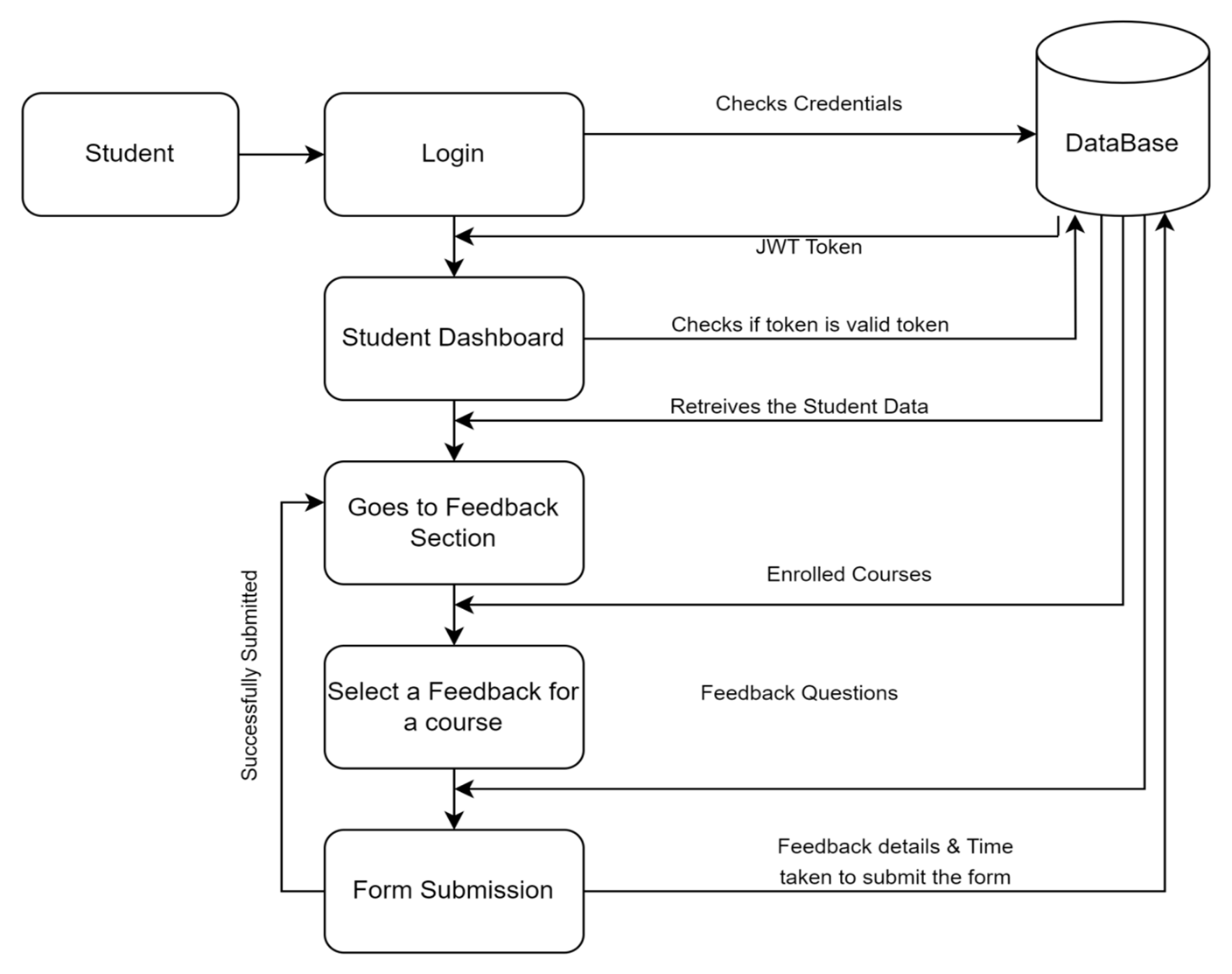
- Published in CSE NEWS, Departmental News, News, Research News
A Smart System for Optimised AAV Localization
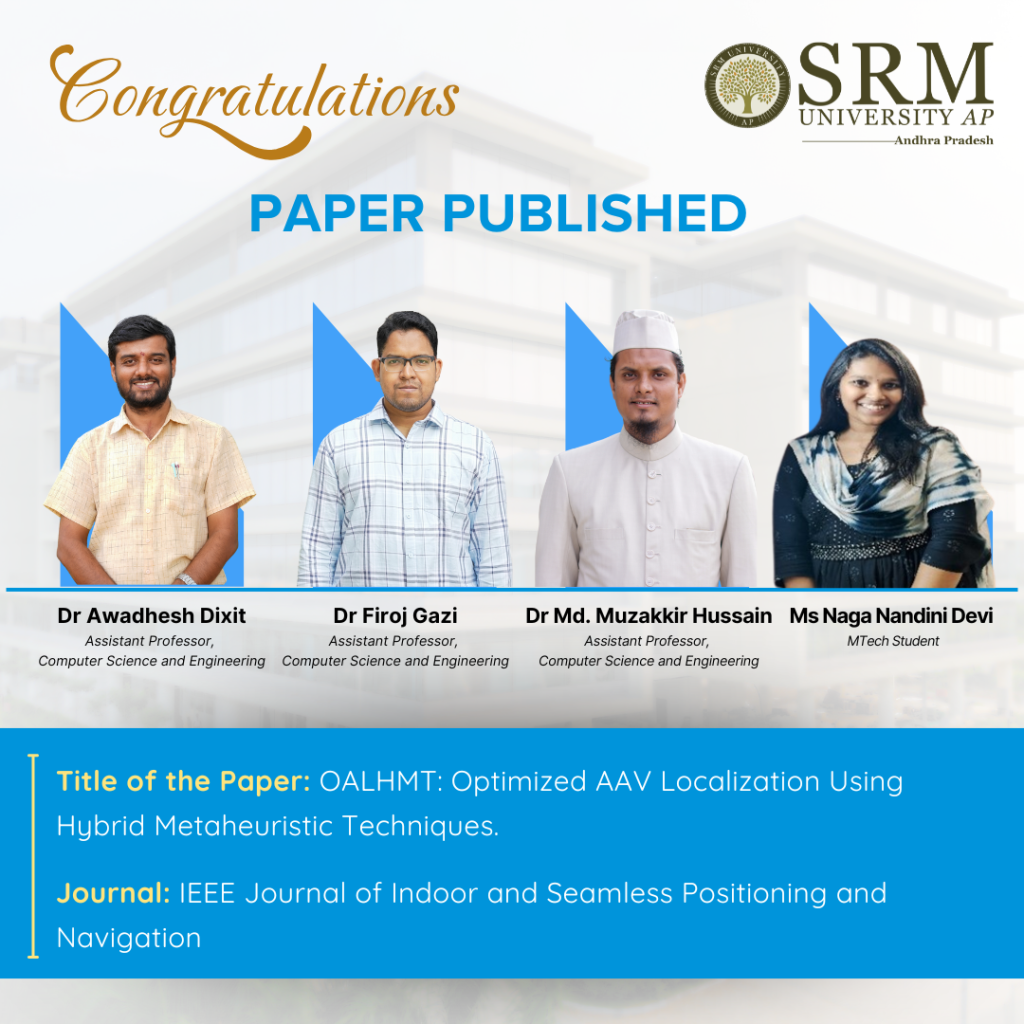
By combining Particle Swarm Optimisation (PSO) and Fuzzy Logic, the team at SRM AP has discovered a hybrid smart system for accurate localization of autonomous aerial vehicles (AAVs). Dr Awadesh Dixit, Dr Firoj Gazi, Dr Muzakkir Hussain Md, Assistant Professors and MTech student Ms Naga Nandini Devi from the Department of Computer Science and Engineering, have published their research article “OALHMT: Optimised AAV Localization Using Hybrid Metaheuristic Techniques” in the IEEE Journal of Indoor and Seamless Positioning and Navigation, that discloses the making and implementation of this smart system that is precise and works better than current methods for positioning and navigation.
Abstract
Accurate localization remains a critical challenge for autonomous aerial vehicles (AAVs) due to their high-speed, multidirectional movement. Precise positioning is essential for efficient resource management and task reallocation during flight. This research proposes a bioinspired hybrid model combining Particle Swarm Optimization (PSO) with fuzzy logic to enhance AAV localization accuracy. PSO effectively explores the search space to identify optimal positions, while fuzzy logic fine-tunes the solution using real-time environmental inputs such as signal strength, sensor noise, and GPS inaccuracies. This synergistic approach leverages PSO’s global optimization with the contextual adaptability of fuzzy systems, delivering robust and precise localization under dynamic and noisy flight conditions. Comparative evaluations with existing methods demonstrate the model’s superior accuracy and responsiveness in real-time AAV operations.
Practical Implementation/Social Implication of the Research
Proposed hybrid optimization for Indoor localization through swarm UAVs, localization methods for autonomous aerial vehicles (AAVs) typically rely on the global positioning system (GPS), which is effective in open environments. GPS provides accurate real-time positional data, making it widely used for outdoor AAV localization.
The team will continue to focus on developing swarm-based V2X communication and coordination, and reduced interference, secure communication for enhance UAV networks performance, advance AI-related applications.
Link to the article
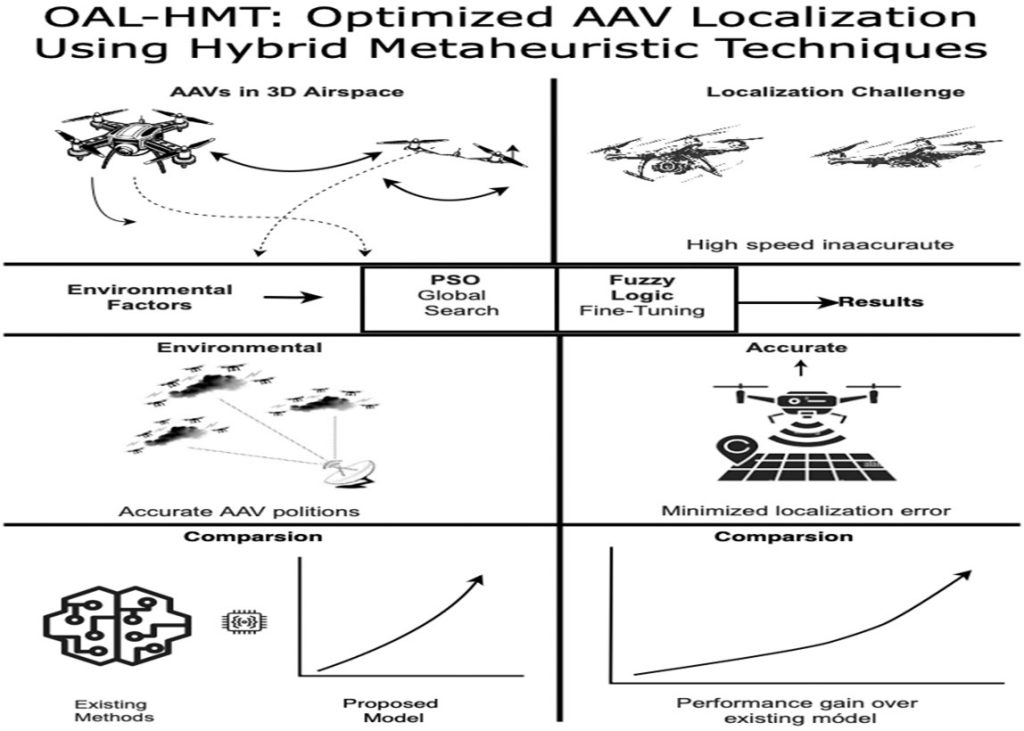
Overall abstract diagram of the paper
- Published in CSE NEWS, Departmental News, News, Research News


